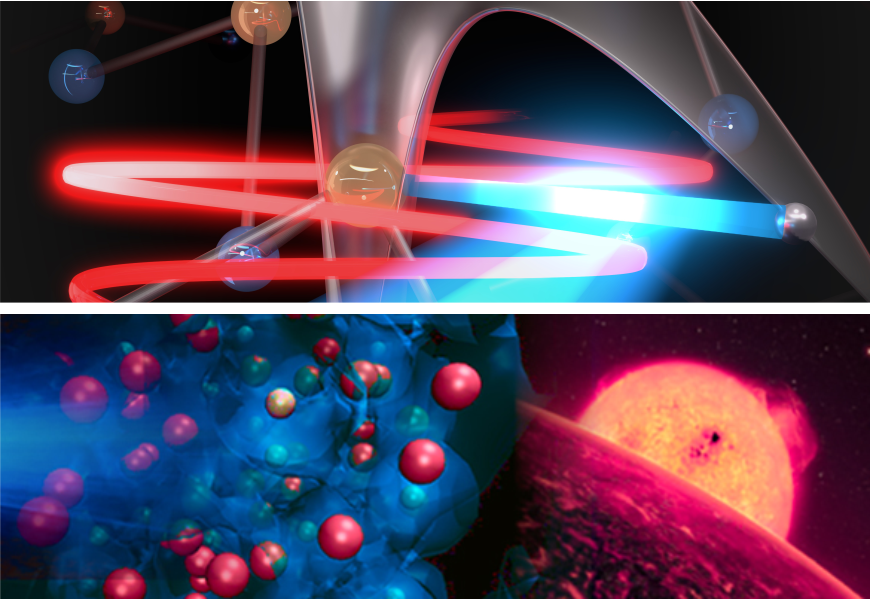Track of study: Intense Laser-Matter Interaction and High Energy Density Physics

Today's lasers reach intensities corresponding to many thousands of suns. This makes it possible to study extreme and physically highly complex states – comparable to the interior of stars and planets – in the laboratory. Together with theoretical methods, computer simulations and astronomical observations, this allows conclusions to be drawn about the formation and evolution of celestial bodies, right up to the origin of life. The relevant plasma states are equally significant for important applications, e.g. the development of compact X-ray sources and particle accelerators as well as the generation of clean energy by fusion.
Ultra-short intense laser pulses allow "filming" of processes at the atomic level in real time with attosecond resolution (10 -18 s). For example, one can follow how electrons move or atoms rearrange. In addition, strongly nonlinear processes lead to the emission of coherent, short-wavelength radiation corresponding to a multiple of the energy of the incident photons and containing information about the structure and dynamics of the irradiated matter.
The field of study introduces the modern theoretical and experimental methods that are used, e. g., in high-performance computers and in large-scale research centers such as the European XFEL.
Contact person
- Prof. Dr. Dieter Bauer
- Prof. Dr. Thomas Fennel
- Prof. Dr. Dominik Kraus
- Prof. Dr. Ronald Redmer


